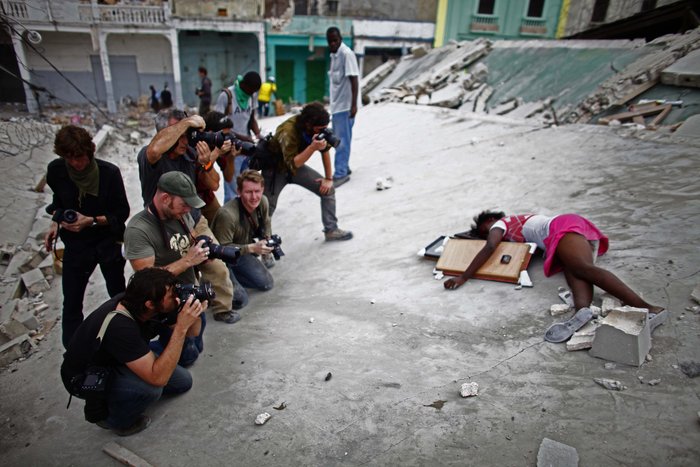
It's important to remember that this is not the first instance in the history of photojournalism that a photographer has turned his camera on the act of documentation.
Regardless of whether Nathan Weber's perspective in this photograph is new, it has reignited critical thinking in the minds of countless viewers and has served as an entry point into some powerful discussions on representation, accountability and the current state of reportage. In moments like this, viewers can no longer grant photography it's illusionary request for autonomy. Photographs do not simply exist-- they are created, and it's that act of creation that clashes with our personal sense of responsibility, humility and respect for the tragedy of others. Why do we willingly engage in photographs that we wouldn't conscientiously take?
Regardless of my appreciation for the discourse surrounding this image, I remain aware that this "discourse" has come at the expense of this young woman's context- the depth of her life and death, her autonomy and privacy. I'm also not sure that adding a media piece and another photograph is enough to produce that context, particularly when it's authored by the same individual.
Does the addition of secondary images give this sort of journalism more complexity, or does it just stand to bolster the statement of the author? How should we engage digital tools to add the necessary context? Or, should we drop this discussion about photography's ability to provide us with anything other than an illustration of an idea?